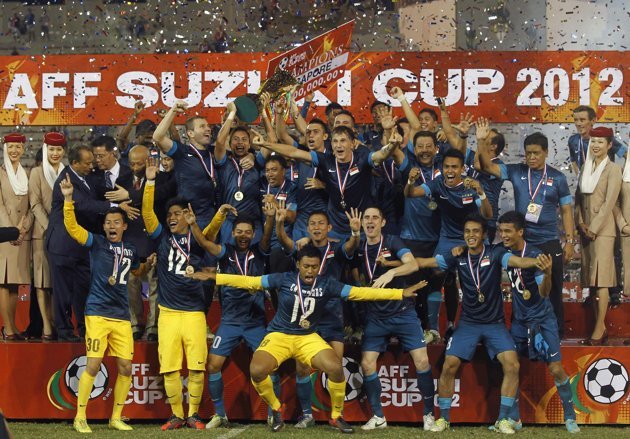By Augustine Low


Chinese play basketball and table tennis, Malays play football and sepak takraw, and Indians gravitate towards hockey and cricket.
Racial dominance and racial imbalance in sports is nothing new.
So it was somewhat surprising when Football Association of Singapore President Zainudin Nordin told MediaCorp’s Suria channel recently that the country must pull in all races to play football.
He said: “Firstly, I’m proud of the Malay community for their talent in football to be successful. But if we want our nation to succeed, we need more talent regardless of race so that we can choose the best of the lot . . . we must give an opportunity to everyone and we must use the system of meritocracy to see who deserves it most.”
Zainudin, also MP for Bishan-Toa Payoh GRC, put it in the context of meritocracy. Really? Meritocracy? Since when has meritocracy been about the numbers game? If Malays have the passion and flair for football, and they work hard to excel at it, don’t they make it to the national team on merit?
There is possibly more to it than what was said. Remember, Zainudin is also Chairman of community organisation OnePeople.sg (OPSG). He made his remarks about pulling in more races for football not long after presenting an OPSG report on race relations in Singapore. The findings showed that there are still challenges to overcome in race relations.
It was revealed, for instance, that racial stereotyping is fairly common and that one in two Singapore residents do not have close friends from another race. OPSG announced that it aims for more opportunities and programmes to promote racial and religious harmony.
So Zainudin could be a little uncomfortable about the racial imbalance in football. Football is the most global of sports, and it is Singapore’s most high profile sport. As such, this makes Malay dominance in the sport all the more glaring.
The national team has always been dominated by Malays but not to the extent that it is today. In recent weeks, 23-man teams selected for Singapore feature only three non- Malays – Madhu Mohana, Gabriel Quak and Qiu Li. Qiu is China-born and only received his citizenship in 2008. So that leaves only one Singaporean Chinese and one Singaporean Indian in a 23-man national team.
In contrast: The first team of the celebrated 1977 Malaysia Cup winning squad coached by Choo Seng Quee had six Malay, five Chinese, two Indian players and one Eurasian. And the famous 1980 team coached by Jitta Singh which reached the final of the Pre-Olympics Qualifying Tournament had a first team comprising eight Malays, four Chinese, two Indians and one Eurasian.
So taken in that context, racial diversity has taken a backseat in Singapore football. It might also encourage stereotyping that Malays overwhelmingly prefer football over studies. This is certainly wrong, but it’s the sort of stereotyping that could well be fostered by almost total dominance of football by Malays.
Although racial imbalance in football may provide some discomfort, it is in itself not a problem. I am more concerned that our young do not seem to kick a ball around for fun anymore, and experience sports for the sheer joy of it.
As with many aspects of Singapore society, sports has become all too competitive. In schools, students select at least one CCA – either sports or uniformed group – and they clock up several hours each week on it. They prepare intensely for competition. They have to participate to earn points.
The situation may get better. In July, the Education Ministry announced that from 2014, the revamped PE syllabus will enable students to take part in more (up to six) types of sports and physical activities. This is the right way to go.
For now, I look at my 13-year-old son as a case in point. He does not have non-Chinese friends, and at the risk of oversimplifying, it is partly because he spends so many hours each week on a CCA that is Chinese-dominated. Whereas my friend’s teenage son has many non-Chinese friends – and I think it’s largely because his chosen sport is cricket!
My contention is that sports as a way to promote racial understanding and tolerance, and bridge racial divides, is largely underestimated. When I was my son’s age (many moons ago!), I had many Malay, Indian and Eurasian friends. We would think nothing of kicking a ball around for the joy of it. In fact we also played speak takraw, volleyball, basketball, table tennis, hockey . . . any sport we could get hold of equipment for.
Playing together, win or lose, for fun or for real, racial lines become blurred, cultural barriers are destroyed, and class divisions are transcended.
As legendary American football coach Vince Lombardi once said: “People who work together will win, whether it be against complex football defences, or the problems of modern society.”
Augustine Low is a communications strategist.

